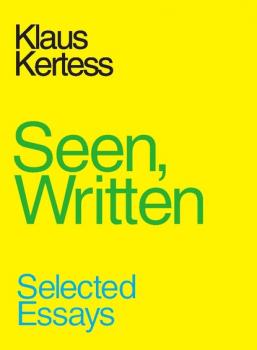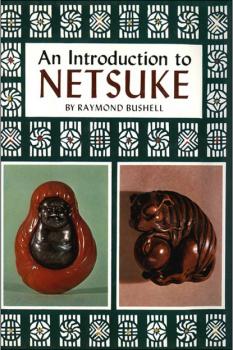ТОП просматриваемых книг сайта:
Изобразительное искусство, фотография
Различные книги в жанре Изобразительное искусство, фотография, доступные для чтения и скачиванияАннотация
The Larry's List team consists of art market researchers from around the world. Currently, we have more than 20 nationalities, each researcher with a background in art history or experience with art dealing.Which city in the world has the highest density of 2014 contemporary art collectors? Which country?Why does Germany almost have as many private art museums as the us?And what are the future trends for the global collectors scene?What you get: Unique Information on Art Collectors! The report offers detailed information on leading art collectors around the world. Our researchers carefully selected the data manually.
Аннотация
The Guggenheim Reader Series: Russia is the inaugural title in a new e-book series that brings together scholarly essays on prominent themes. The Guggenheim has a rich history of exploring Russian art and the avant-garde in particular; this anthology collects the most insightful and influential essays from exhibition catalogues such as The Great Utopia: The Russian and Soviet Avant-Garde, 1915–1932 (1992) and Russia! Nine Hundred Years of Masterpieces and Master Collections (2005), as well as focused monographic studies of Russian masters like Vasily Kandinsky and Kazimir Malevich.
Аннотация
This digital publication accompanies the exhibition Making is Thinking that took place at Witte de With Center for Contemporary Art (23 January – 1 May 2011).The publication features a historical perspective on craft by Alice Motard; a short story by Yoshiko Nagai, inspired by Teppei Kaneuji’s animation Tower; a conversation between artist Ane Hjort Guttu and Solveig Øvstebø titled The Emancipation of Forms; an essay by Gavin Delahunty on the work of Koki Tanaka and Julia Dault; and an afterword by curator Zoë Gray.
Аннотация
The Larry's List team consists of art market researchers from around the world. Currently, we have more than 20 nationalities, each researcher with a background in art history or experience with art dealing.Which city in the world has the highest density of 2014 contemporary art collectors? Which country?Why does Germany almost have as many private art museums as the us?And what are the future trends for the global collectors scene?What you get: Unique Information on Art Collectors! The report offers detailed information on leading art collectors around the world. Our researchers carefully selected the data manually.
Аннотация
On Curating, Carolee Thea's second volume of interviews with ten of today's leading curators, explores the intellectual convictions and personal visions that lay the groundwork for the most prestigious and influential exhibitions in the world today. Among the aesthetic and theoretical issues raised are the relationship between artist and curator, globalism, post-colonialism, capitalism, the future of cultural tourism and the biennial as spectacle or utopian ideal. As Thea notes in her introduction, «the biennial or mega-exhibition–a laboratory for experimentation, investigation and aesthetic liberation–is where the curators' experience and knowledge are tested. As they negotiate venues for artistic expression, intellectual critiques and humanistic concerns in their own societies and others, they are challenged by the certainties and uncertainties of a constantly evolving future.» Thea's interviewees are Joseph Backstein, Carolyn Christov-Bakargiev, Okwui Enwezor, Charles Esche, Massimiliano Gioni, RoseLee Goldberg, Mary Jane Jacob, Pi Li, Virginia Perez-Ratton and Rirkrit Tiravanija. On Curating also includes 50 color illustrations of relevant works by (among others) Kutlug Ataman, Tamy Ben-Tor, John Bock, Cao Fei, Olafur Eliasson, Isaac Julien, Francois & Philippe Parreno, Yvonne Rainer, Michael Rakowitz, Doris Salcedo, Allan Sekula, Yinka Shonibare and Francesca Woodman.Carolee Thea is a curator, critic, art historian and independent scholar. Her first book, Foci: Interviews with Ten International Curators was published in 2001. She is contributing editor at ArtAsiaPacific and Sculpture magazine and was the English editor of Atlántica 45. Her articles, reviews and interviews have been published in many arts journals, among them Parkett, Artforum.com, The New Art Examiner, Modern Painters, Artnet.com, ZSijue 21 Beijing, Heresies, Tema Celeste, Parachute and ArtNews.
Аннотация
Curator and historian, gallerist and writer: Klaus Kertess has long been a decisive and forward-thinking presence in the art world. He founded the Bykert Gallery in 1966, where he represented artists including Chuck Close, Ralph Humphrey, Brice Marden and Dorothea Rockburne; three decades later, he curated the 1995 Whitney Biennial, the follow-up to the famously political 1993 iteration. «What is being proposed here,» he wrote in a catalogue essay for the 1995 exhibition, «is not a return to formalism but an art in which meaning is embedded in formal value. An acknowledgment of sensuousness is indispensable–whether as play or sheer joy or the kind of subversity that has us reaching for a rose and grabbing a thorn.» The art world has changed considerably from the relatively convivial world of the 60s to today's globalized milieu, but Kertess has been a constant throughout the years, curating shows of provocative new work and writing critical essays on artists whose work challenges and engages him, while also maintaining a vital literary sideline (his short stories are collected in 2000's South Brooklyn Casket Company). This volume collects Kertess' critical works from the past 30 years, including meditations on Agnes Martin, Joan Mitchell, John Chamberlain, Vija Celmins, Chris Ofili and Matthew Richie. With each essay accompanied by full-color reproductions of works discussed, Seen, Written provides a priceless opportunity to see art through the eyes of a lifelong viewer.
Аннотация
[i]Photographs Not Taken is a collection of photographers’ essays about failed attempts to make a picture. Editor Will Steacy asked each photographer to abandon the conventional tools needed to make a photograph—camera, lens, film—and instead make a photograph using words, to capture the image (and its attendant memories) that never made it through the lens. In each essay, the photograph has been stripped down to its barest and most primitive form: the idea behind it. This collection provides a unique and original interpretation of the experience of photographing, and allows the reader into a world rarely seen: the image making process itself. Photographs Not Taken features contributions by: Peter Van Agtmael, Dave Anderson, Timothy Archibald, Roger Ballen, Thomas Bangsted, Juliana Beasley, Nina Berman, Elinor Carucci, Kelli Connell, Paul D’Amato, Tim Davis, KayLynn Deveney, Doug Dubois, Rian Dundon, Amy Elkins, Jim Goldberg, Emmet Gowin, Gregory Halpern, Tim Hetherington, Todd Hido, Rob Hornstra, Eirik Johnson, Chris Jordan, Nadav Kander, Ed Kashi, Misty Keasler, Lisa Kereszi, Erika Larsen, Shane Lavalette, Deana Lawson, Joshua Lutz, David Maisel, Mary Ellen Mark, Laura McPhee, Michael Meads, Andrew Moore, Richard Mosse, Zwelethu Mthethwa, Laurel Nakadate, Ed Panar, Christian Patterson, Andrew Phelps, Sylvia Plachy, Mark Power, Peter Riesett, Simon Roberts, Joseph Rodriguez, Stefan Ruiz, Matt Salacuse, Alessandra Sanguinetti, Aaron Schuman, Jamel Shabazz, Alec Soth, Amy Stein, and others.
Аннотация
As any historian or casual observer of urban transformation might tell you, walls are not everlasting. The following collection examines different ways monuments and notions of monumentality in art and architecture exist in relation to this reality. From Esther Yi's chronicle of the uncertain fate of a section of the Berlin Wall known as the East Side Gallery, to Michael Z. Wise's essay on the Casa Malaparte in Capri, the articles collected in this month's LARB Digital Edition examine the powerful sway of the monumental on our common sense. Also in this issue, Victoria Dailey covers land artist Michael Heizer's LACMA installation, Levitated Mass; Evan Selinger reviews Bianca Bosker's in-depth look at the phenomena of “duplitecture,” Original Copies: Architectural Mimicry in Contemporary China; Victoria Bugge Oye reviews the first ever monograph on the acclaimed Postmodern architects Diller, Scofidio, and Renfro; and we look back on architect Joe Day's own monumental undertaking with the Getty's Pacific Standard Time Presents: Modern Architecture in L.A.
Аннотация
A Copybook for Japanese Ink Painting is designed for artists who are eager to find a new outlet for his talents.The paintings are the work of Shutei Ota, an artist who has had a long career of introducing Japanese ink-painting to Westerners. As a teacher, she has found the language barrier to be no handicap. She teaches by showing, by example, and by holding the hands of her students-beginning immediately with strokes and foregoing preliminary sketches. «Paint now» is her philosophy. She likes to think of her paintings as written compositions. Each stroke is a sentence, and each sentence builds up to a complete message or picture.In this book, examples graded from easy to difficult are given. Westerners will no doubt make practical use of the art to create place cards, greeting cards, Christmas cards, and the like for personal use. Beyond this, of course, the study of Japanese ink painting will lead to better understanding of the discipline of Asian arts in general.
Аннотация
With dozens of photos and illustrations, A Introduction to Netsuke is a readable and thorough guide to Japanese miniature art.Among the many Japanese fine arts, few have aroused greater admiration than the netsuke. This miniature piece of Japanese sculpture, approximately 1 1/2 inches in size, was designed (in the absence of pockets on kimonos) as an aid in suspending articles such as tobacco pouches from the sash of a kimono. It developed in ancient times as a utilitarian object, but became in the 16th century an artistic one as well, and flourished as such until 1926. No longer commonly worn, the netsuke is now a collectors' item, avidly sought throughout the world by those sensitive to its fine qualities.This book opens the miniature world of netsuke to those who have hitherto been unaware of its existence. In a delightfully lucid manner, the basics of the netsuke are presented-definition, origin, development, materials, statistics, and photographs. This book admirably fulfills its task of introducing the netsuke to the layman, irresistibly drawing him to new pleasures in aestheticism and culture.










